A Gaussian surface S encloses two charges q1=qandq2=−qthe field at p is
where →E1,→E2and→E3 are the field contributed by q1,q2andq3at P respectively.
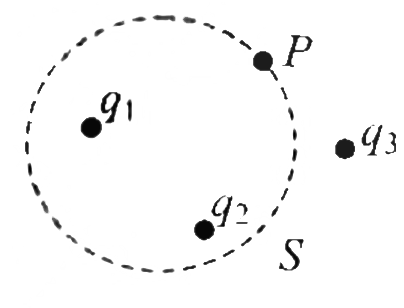
→E1+→E2
→E1+→E2+→E3
→E3
→E1+→E2−→E3
The correct Answer is:b
Step by step video & image solution for A Gaussian surface S encloses two charges q_(1)= q and q_(2) = -qthe field at p is where vecE_(1), vecE_(2)and vecE_(3) are the field contributed by q_(1),q_(2)and q_(3)at P respectively. by Physics experts to help you in doubts & scoring excellent marks in Class 12 exams.
Updated on:21/07/2023Topper's Solved these Questions
- ELECTRIC FLUX AND GAUSS LAWBook:CENGAGE PHYSICS ENGLISHChapter:ELECTRIC FLUX AND GAUSS LAWExercise:Subjective type
Explore 7 Videos
- ELECTRIC CURRENT AND CIRCUITBook:CENGAGE PHYSICS ENGLISHChapter:ELECTRIC CURRENT AND CIRCUITExercise:Interger
Explore 8 Videos
- ELECTRIC POTENTIALBook:CENGAGE PHYSICS ENGLISHChapter:ELECTRIC POTENTIALExercise:DPP 3.5
Explore 15 Videos
Similar Questions
In figure, the charges on C1,C2, and C3, are Q1,Q2, and Q3, respectively.
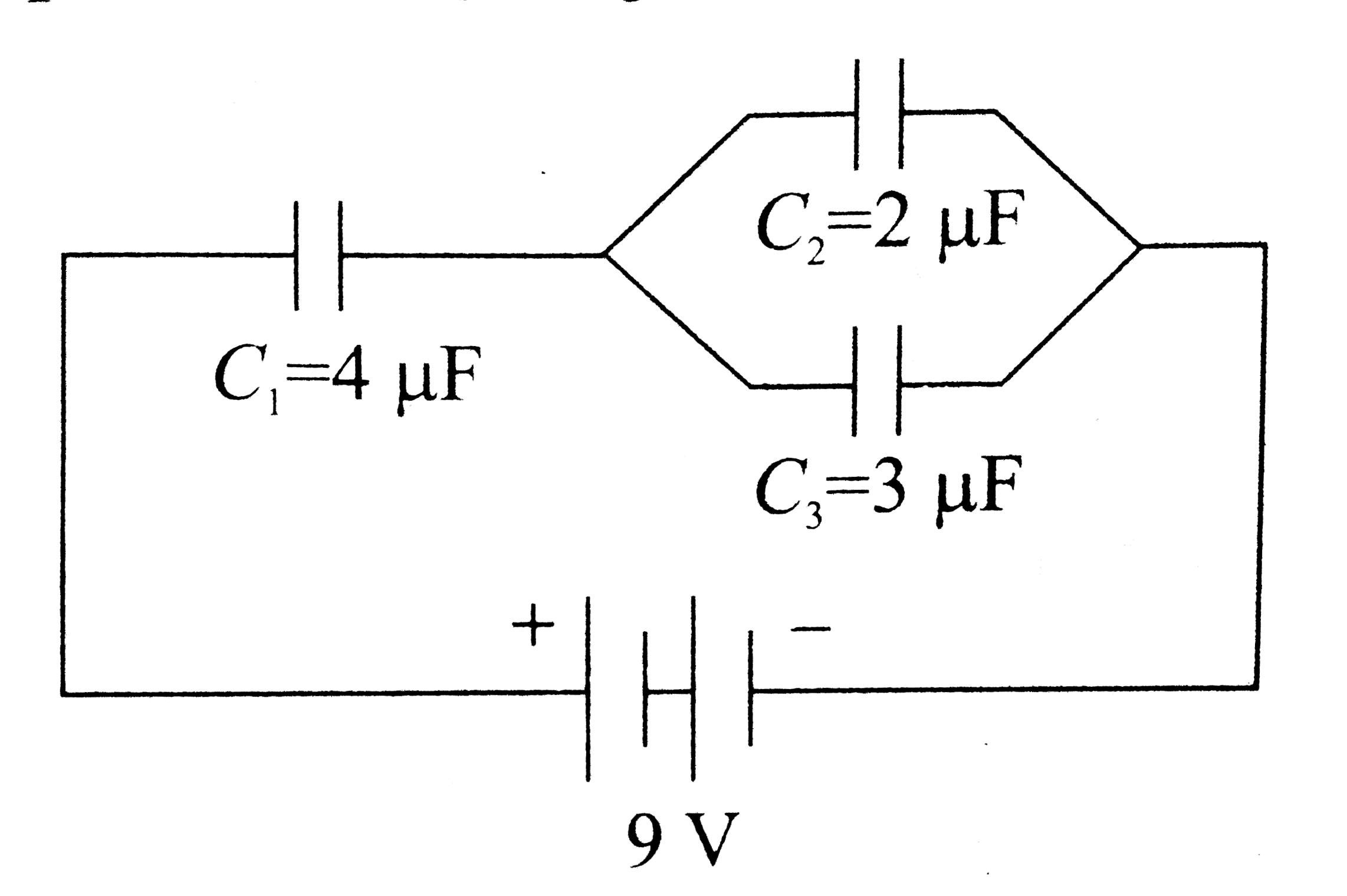 .
.
View SolutionA charge Q located at a point →r is in equilibrium under the combined field of three charges q1,q2 and q3. If the charges q1 and q2 are located at point →r1 and →r2 respectively, find the direction of the force on Q due to q3 in terms of q1,(q2),→r1→r2, and →r.
View SolutionA charge q1 exerts some force on a second charge q2 If a third charge q3 is brought near q2, then the force exterted by q1 on q2
View SolutionA point charge Q is placed at origin. Let →EA,→EB,and→EC be the electirc field at three points A (1,2,3), B (1,1,1), and C(2,2,2) due to charge Q. Then
View SolutionTwo nonconducting infinite planes sheets having charges Q and 2Q are placed parallel to each other as shown in figure. The charge distribution on the four faces of the two plates is also shown. The electric field intensities at three points 1, 2, and 3 are →E1,→E2,and→E3, respectively. Then the magnitudes of →E1,→E2,and→E3 are, respectively (surface area of plates ) :
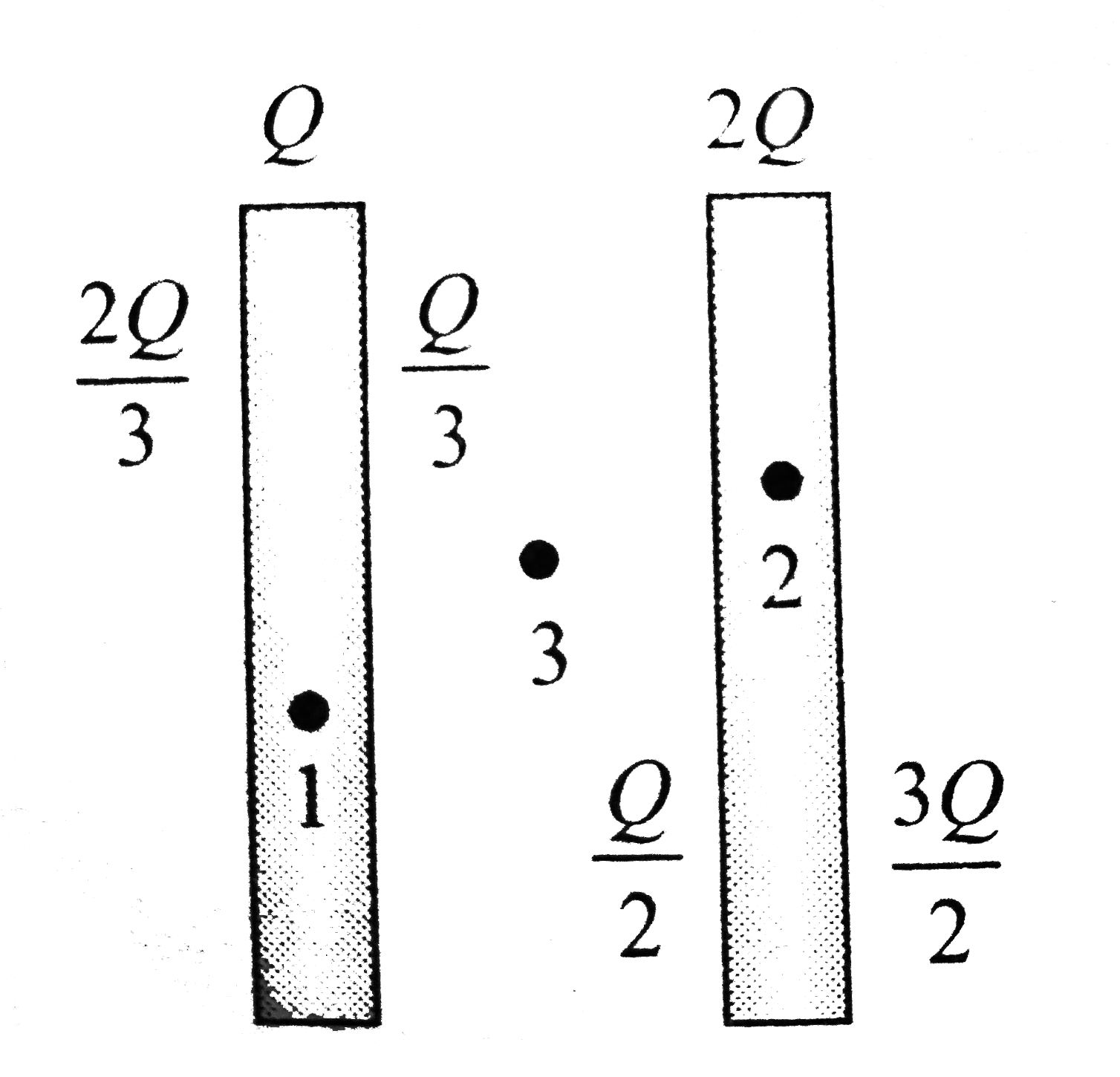
View SolutionAn insulating spherical shell of uniform surface charge density is cut into two parts and place at a distance d apart as shown in figure. →Epand→EQ denote the electric fields at P and Q, respectively. As d(i.e.PQ)→∞
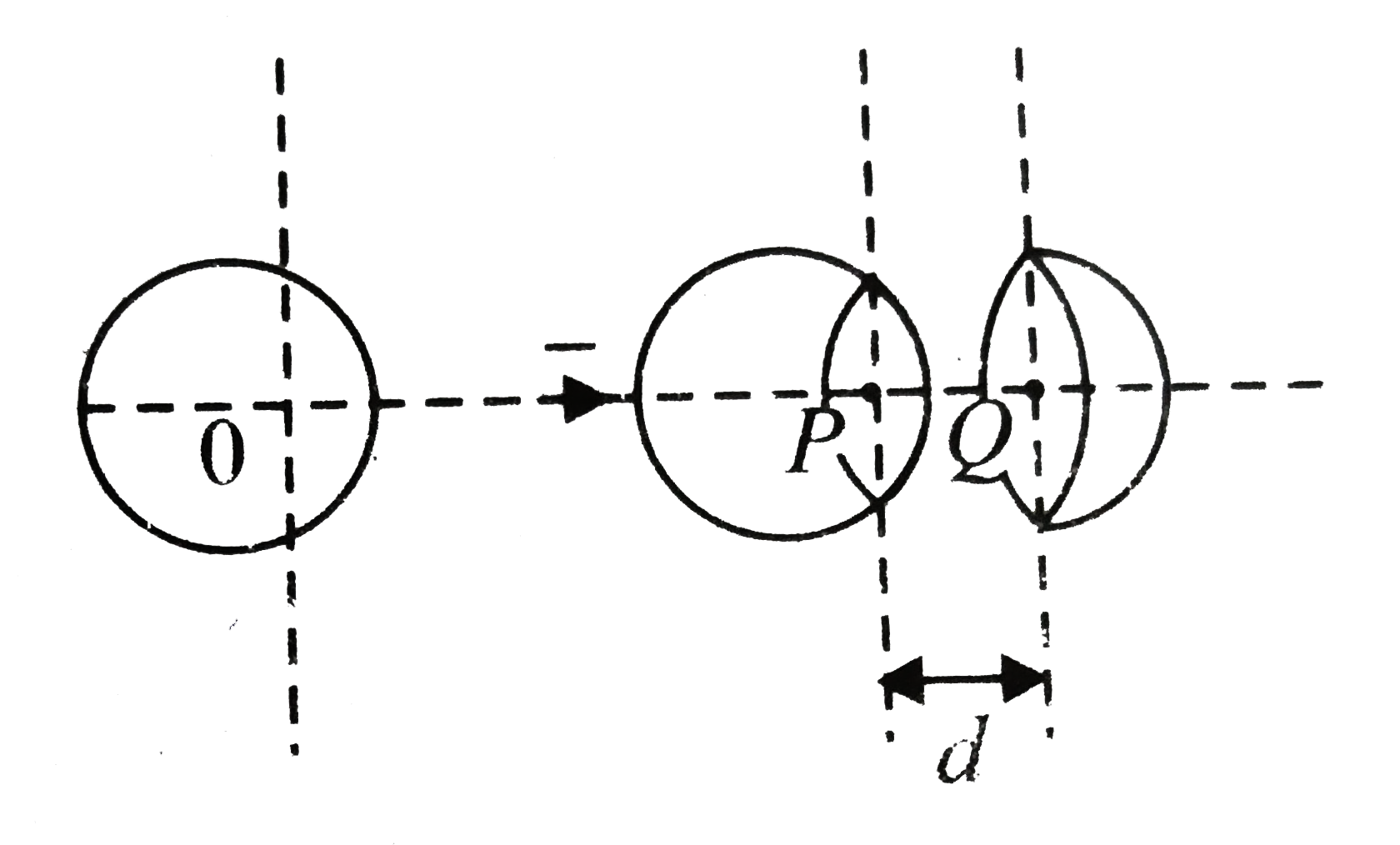
View SolutionLooking at the vanous electric lines of forces between charges Q1 and Q2 find the value of Q1Q2
View SolutionLooking at the various electric lines of forces between charges Q1 and Q2 , find the value of Q1Q2
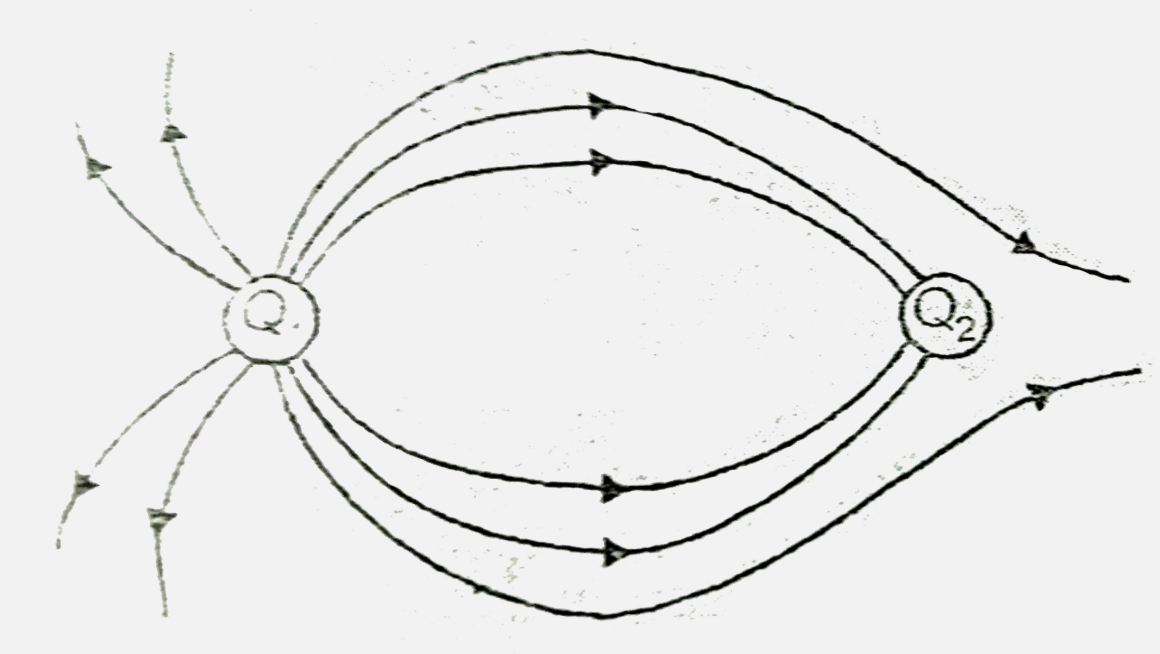
View SolutionTwo electric charges q1=qandq2=−2q are placed at a distance l = 6a apart. Find the locus of points in the plane of the charges where the field potential is zero
View SolutionCharges q1 , q2 and q3 are placed on capacitors of capacitance C1, C2 and C3, respectively, arranged in series as shown. Switch S is there closed. What are the final charges q'1, q'2 and q'3 on the capacitors?
Given q1=30μC, q2=μC, q3=10μC, C1=10μF, C2=20μF, C3=30μF and ε=12volt
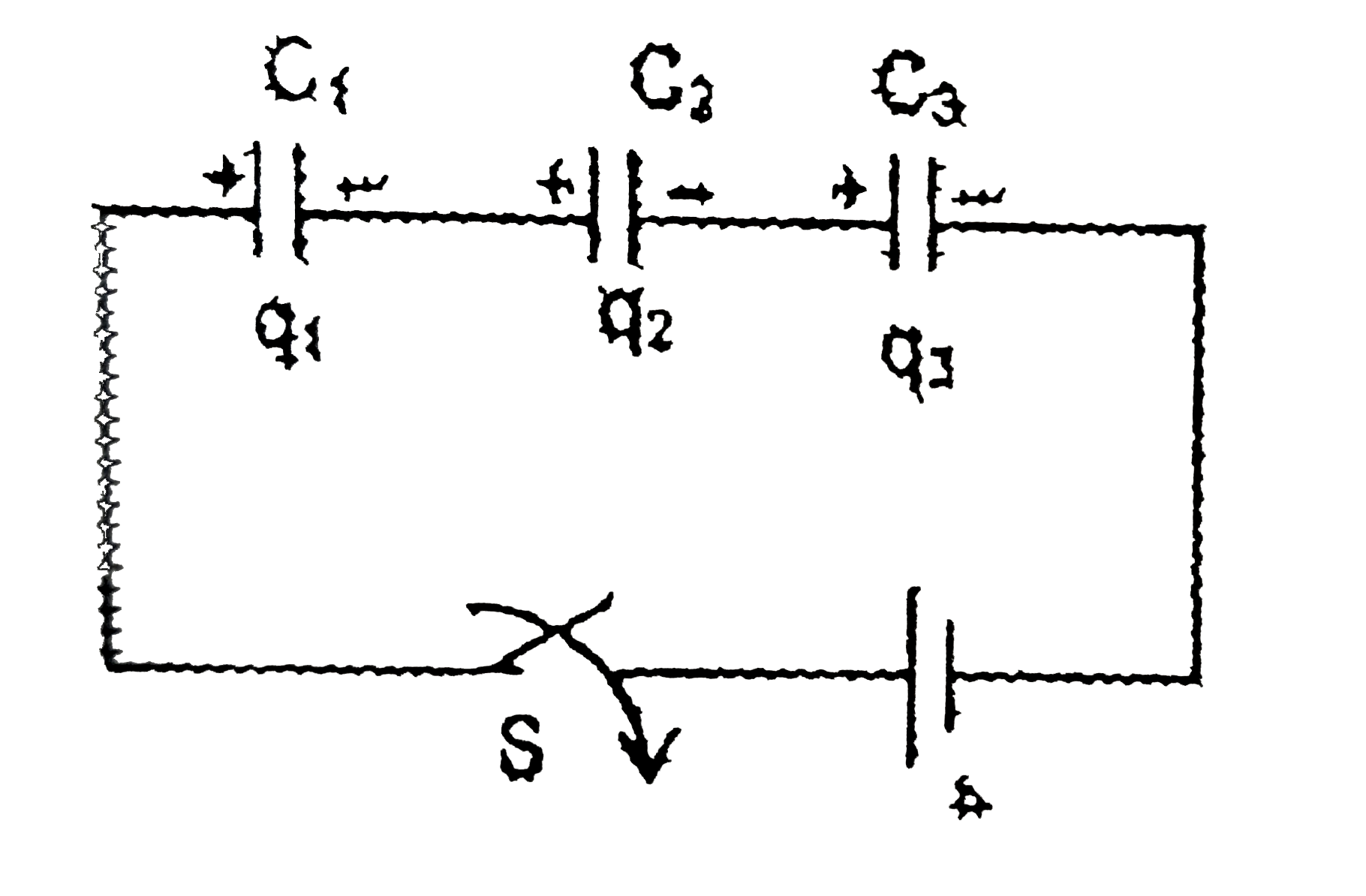
View Solution